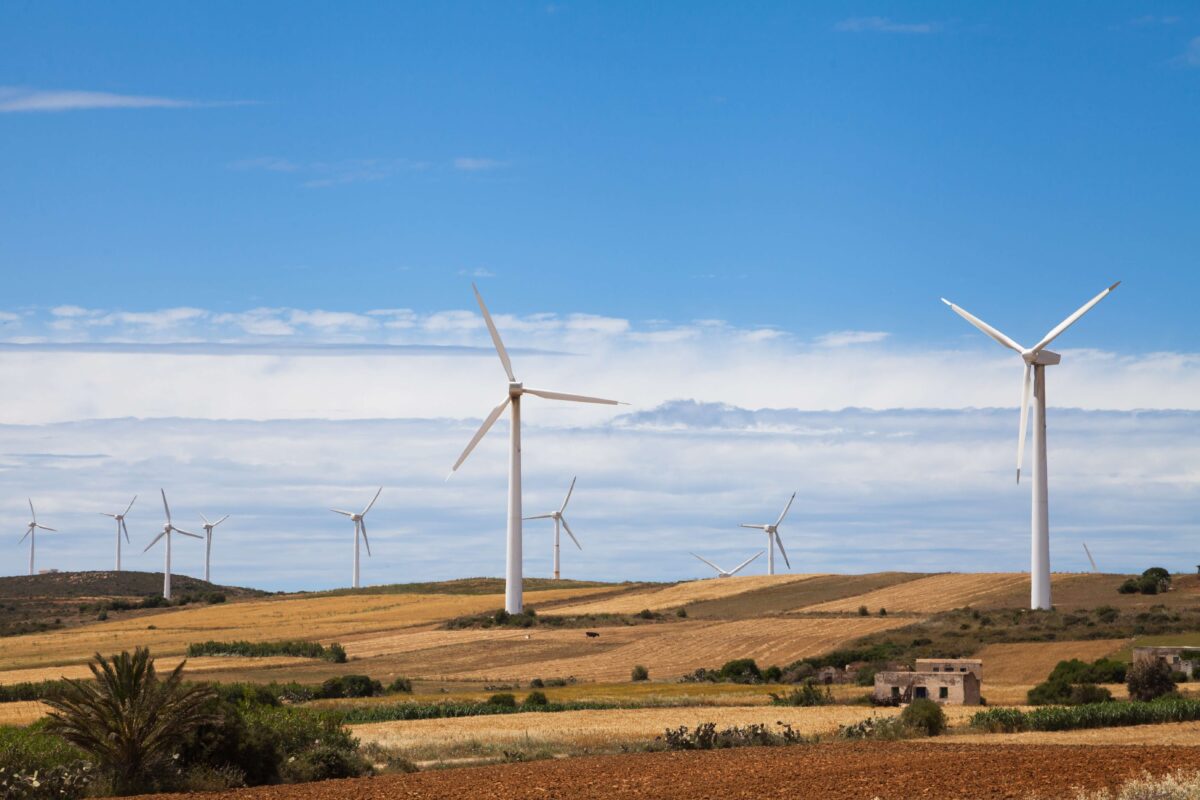UK faces uncertainty over energy and climate future; clean tech leaders envision the growth of energy-sharing platforms for the grid of the future
Uncertainty in the UK
It’s now emerging that the involvement of CNNC (formally China’s Ministry of Nuclear Industry) in Hinkley C was key to the Government’s decision to put a hold on development, in large part due to the company’s military links and the alleged charges they are facing of nuclear espionage in America.
Following this and the substantial reshuffle since Brexit there has been some uncertainty around the UK’s energy and climate future, which has led large energy users to call on the new Department of Business, Energy and Industrial Strategy (BEIS) to prioritise the creation of a long term policy framework. Respondents to a survey of 50 major energy users claimed that more confidence in the security of investments was needed, along with a clearer indication of future direction and vision. This is particularly timely given the recent revaluation of business rates attached to solar PV installations, which could an increase from circa £8 per kWh to as much as £61/kWh, placing the economics of many an on-site generation installations at risk.
Following the change in Feed In Tariffs, this could be detrimental to the growth of solar in the UK, although Nottingham City Council isn’t letting this hold them back. They city has met 33% reduction in carbon emissions since 2005 (above their 26% target for 2020), with solar forming a large part of the initiatives undertaken including the UK’s largest solar carport and installation of PV on over 4000 council homes.
Growing Renewables
Saudi Arabia is propelling itself to the front-lines of renewable deployment with a strong target for 9.5GW or renewables by 2023 (up from 25MW in 2015, but still only 5% of current electricity demands). This target is being implemented under the new ‘King Salman Renewable Energy Initiative’, and facilitated by a government restructure bringing a centralised, top-down structure to push development of the country’s “Vision 2030”.
And while India have been slow to the table with growing rooftop PV, the State Bank of India (SBI) recently signed a deal with the World Bank for a US$625 million facility to support growth in this space. And now the Solar Energy Corporation of India (SECI) has developed a scheme targeting 1GW of grid-connected PV on government buildings.
In the midst of such positive growth, there are concerns about China’s solar future due to difficulties financing new projects, cuts in subsidies, and wasted generated due to weak demand growth alongside rapid growth in generation capacity of coal-fired, nuclear, and wind power, and surging hydro power output from higher-than-normal rainfall. Despite this, installations were up 159% in the first 6 months of 2016, and perhaps this is the beginning of a shifting vision toward sustainable growth in quality installations, rather than a focus on quality alone.
Things are also looking positive on the financing front, with BlackRock, the world’s largest asset manager, having secured €650 million for a Renewable Income Europe fund, which has to date invested in nine wind and solar projects in the UK are Ireland, and has longer term visions for a diversified European wind and solar portfolio.
The US is also seeing new support for getting solar onto roofs with strong investment in solar loans. Mosaic just announced $220 million in equity financing (after closing a $200 million warehouse facility earlier in the year with DZ BANK), and Vivint Solar recently closed new $313 million loan facility to support solar lease and loan schemes. In fact, according the GTM research, the declining costs of solar and the availability of solar loans is seeing a shift away from leasing models and retuning to consumer owner/operator models.
Balancing Supply and Demand
The growth in wind and solar of recent years could stimulate further growth in hydro-power, which in 2015 provided the US with 6.2% of the nation’s electricity, 48% of all renewable electricity, and 97% of all energy storage. A recent DOE report suggests that while the growth potential is very real, solutions to environmental challenges and technology innovations to reduce project costs must first be identified. However, growth of variable renewable generation and the growing need for system flexibility could open up new market potential for pumped hydro projects to take advantage of as electricity system adapt to major changes in the years to come.
Consolidated Edison held its first demand response capacity action recently – awarding contracts to deliver 22MW of peak reductions in 2018 – with an aim of deferring investment in a new substation in New York. As part of the “Neighbourhood Program” demonstration project under New York’s Reforming the Energy Vision initiative, ConEd are hoping to defer the build of a $1.2 billion substation upgrade through 52MW of demand reduction and 17MW of distributed resource investment. Winners in the auction include Stem, EnerNOC Inc., Innoventive Power, Direct Energy, Power Efficiency, Demand Energy Networks, Energy Spectrum and Tarsier.
The important of demand response is evident in the Organization of PJM States Inc. (OPSI) resolution urging the PJM Board of Managers to develop market rules “which optimize the participation and value of demand response” in the wholesale markets. The resolution states, “PJM’s planning process for the Base Residual Auction does not provide explicit recognition of the benefits from demand response except for those megawatts of demand response which clear in a PJM capacity auction”.
Such demand response could support power outages on long hot summer days, which are currently being tackled through the use of smart technology and energy efficiency measures.
In Australia a different measure is being adopted to support Adelaide’s grid and reduce risks of power price shocks; AGL is installing the world’s largest virtual power plant, using software to enable 1000 residential scale batteries to be linked together and monitored and managed by a central platform, delivering 5MW/7MWh storage capacity. As well as providing ancillary services to the grid, these distributed resources can support customers use energy generated by solar on their rooftops or stored solar in batteries to reduce peak power draw from the grid. And in the US Arizona has plans to follow suit, with planned spending of up to $4 million on a residential storage programme (though the exact nature has yet to be determined).
New Players
In the UK Newcastle has installed a gas fired combine heat and power system inside their St James’ Park stadium to cut carbon emissions and generated power and heat. And Bristol’s Ashton Gate stadium has cut carbon emissions by 20% following the install of a 460-panel, 117kWp solar PV system, expected to generate 95MWh annually (which will all be used onsite).
While small scale generators in some countries are struggling to get permission to feed used power back into the grid (due to constraints emerging in the networks), in the US Federal Energy Regulatory Commission (FERC) has just granted Apple market-based rate authority. The company owns a number of renewable assets, including a 20 MW solar farm in Nevada, a 50 MW solar facility under construction (due online later this year) in Arizona, and two behind-the-meter generating plants totaling 18 MW on its California campus. Under this new ruling they are able to sell excess power back into wholesale competitive markets.
Community solar programmes are also starting to show rapid growth, enabled in large part through the emerging software driven community solar industry. Enterprise level software is delivering standardised solutions to integrate ad manage multi-megawatt portfolios; the Community Solar Platform provides the industry with tools to support consumer acquisition, programs and regulatory management, billing integration, facility O&M, and customer E&M. This enables large community solar portfolios to be rolled out quickly, such as Renovus Solar, who signed up over 400 customers in just a few hours. With possibilities to include time of use rates into such offerings, this could deliver value to the grid and minimise negative impacts on non-participating customers.
All up, a clean power revolution is happening, and utilities should be scared. With some of the biggest corporate energy customers taking things into their own hands, including buying power direct from clear energy providers, utilities may no longer be needed in the future. Spearheaded by the elite of the Fortune 500, clean energy is being bought direct from generators via corporate deals using power purchase agreements; over 3.2 GW were signed in 2015 (more than double that of 2014), and we’re now seeing municipalities, universities, and other institutions adopting the model. And with the UK’s Future Power System Architecture report suggesting that peer-to-peer trading platforms are a required functionality by 2030, this opens up interesting thoughts around what the power grid of the future will look like.
The Grid of the Future?
Is the grid of the future a shift away from energy-delivering pipeline (from central power stations out across wires to customers at the other end) to energy-sharing platforms? Anne Pramaggiore, CEO of ComEd, and Lyndon Rive, CEO of SolarCity certainly think so. They believe that this would allow utilities to leverage their infrastructure to create a virtual marketplace (“the ultimate Uber”) for trading energy and energy services, and receive compensation for the service they provide rather than for the electrons they deliver.
This perspective is similar to New Zealand based transmission system operator Transpower, outlined in their 2016 report Transmission Tomorrow. Chief Executive Alison Andrew believes that “ultimately, the power system of tomorrow will be radically different to what it is today. In the long-term horizon, battery or other storage technologies installed within homes and businesses, vehicles, distribution networks, and grid substations could fundamentally alter how the power system is operated by covering short-term power imbalances in supply and demand… That could change the core role of the grid. We currently make many investment and operational decisions on providing 24/7 reliability of supply. In the future, you could see this change, as we become more of a charging service for batteries, or a pathway for new technologies. This essentially moves the transmission service from one of reliability to resilience.”




